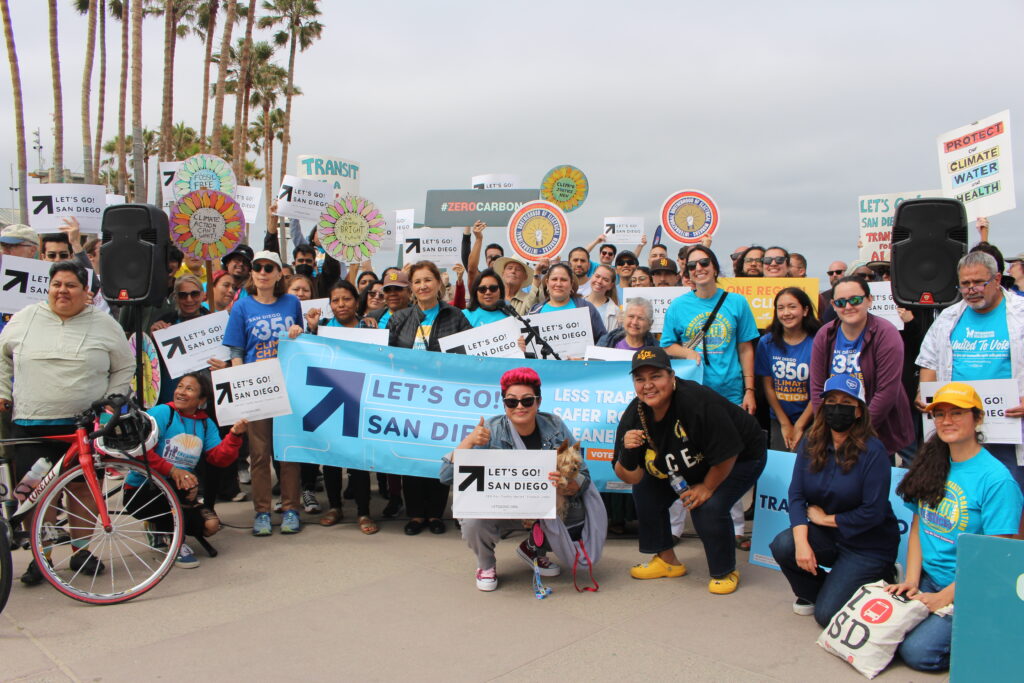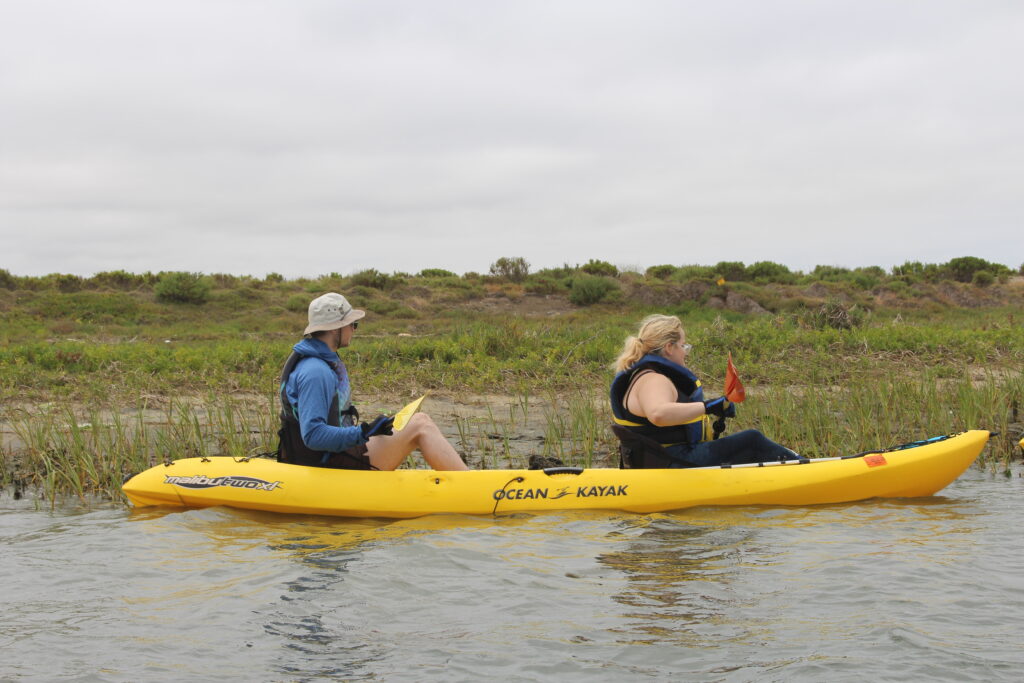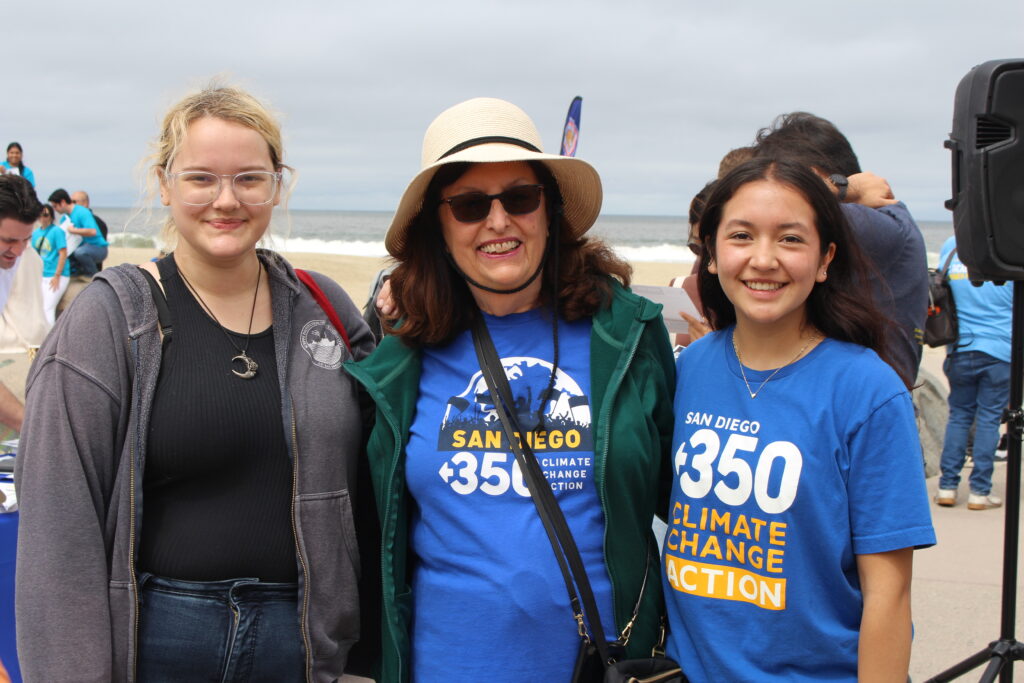By Roran Ausman, SD350 Volunteer
Starting off the morning of World Ocean Day (June 8th) eating breakfast on the beach seemed fitting. It should have been serene, but seeing the empty waters of Imperial Beach a few days after reading Surfrider’s Clean Water Report, and knowing it’s been closed for over 900 days because of the poor water quality, was sobering. I thought of the devastating impacts of the flooding in this area earlier this year, and the two hours it would have taken me to get there had I wanted to take public transit that morning. Both the infrastructure and increased water pollution are indicative of the lack of investment in the area. Despite this, the area was vibrant with local businesses, busy streets, and families out for Sunday morning strolls.

To kick off World Ocean Day, June 8th, SanDiego350 and many of our partners were set up for the launch of Let’s Go! San Diego (photos), a ballot measure for the November election. During the event Paloma Aguirre, the Mayor of Imperial Beach, spoke to how proud she is of Imperial Beach, but also how much more they could do if they were better connected to the rest of San Diego. One of the speakers took public transit to get to the event, and shared with us that it took her three hours one way to get to Imperial Beach.
That’s part of why Let’s Go! San Diego is so important. The half-cent tax would support a myriad of transit projects meant to help uplift communities that have been neglected by our existing planning. Some of these include an express blue line from Downtown to South County, the proposed purple line, and lowered fair rates for a number of concerned populations.
As transportation accounts for 40-50% of our greenhouse gas emissions, increasing public transit ridership will not only help connect our city (and reduce the amount of time we spend stuck in traffic), but will also combat climate change and promote public health. The program will also create thousands of green jobs, provide funds to repair bridges, streets, and rail lines, and create new public transportation lines- including a rail connection to the airport.

With the idea of a more convenient way to travel in mind, I set off to travel in one of my favorite ways(even if it is more fun than efficient) – Kayaking! After attending the Let’s Go! San Diego launch, I made my way to San Diego Bay, for SD350’s “Kayaking to Clean Our Wetlands” event (photos) in Sweetwater Marsh, one of San Diego County’s many wetlands. This event was in collaboration with Ocean Connectors, a conservation nonprofit in San Diego.
As their name suggests wetlands are areas where the soil is covered by water for some or all of the year. They are incredibly diverse ecosystems, hosting an impressive bounty of life. Our San Diego Wetlands are home to many beautiful (and some endangered) species. Some of my personal favorites are the snowy egret, the black crowned night heron, the horned grebe, the desert cottontail, salt marsh moth, and the San Diego pocket mouse.
Beyond being centers of life for many other species, wetlands also are important supporters of human life. They help filter our stormwater and protect from stormwater surges and sea level rise. As we saw this last rainy season, storms can have a devastating impact on human infrastructure. Robust wetlands are incredibly effective at absorbing rapid changes in water level. Wetlands are also one of the most effective biological methods of absorbing carbon dioxide (a harmful greenhouse gas) from the atmosphere, so much so that they earned the title “blue carbon”.
Before launching the kayaks we were encouraged to look at Ocean Connector’s Museum of Plastic, a mobile informational exhibit detailing how much longer plastic products take to break down than other products. Plastic takes 300-500 years to break down, whereas cotton takes a week to five months and cardboard takes just two months. While kayaking, we got to see a good example of that discrepancy, when we found a very decayed pair of what were once cotton pants with a pristine-looking band-aid inside. Our main mission was looking for trash, but we were also observing the beautiful ecosystem in front of us. We were told to keep an eye out for some Osprey that were nesting in the area. While I missed the Osprey, I saw quite a few other birds, including a mockingbird. I also got to put my marine plant and algae identifying skills to use to identify seagrass and confirm that the big, bright green sheets people were worried about were thankfully just large pieces of sea lettuce and not plastic.

While it was fun to put my kayaking skills to the test, navigating the channels of the marsh while balancing a trash grabber, it’s important to do more to protect these incredible spaces. California has lost over 90% of our wetlands in the last century, but there are lots of people working to protect our wetlands and fight climate change both locally and across the state. You can take action right now, and a great way to start is by visiting your local wetlands – from the Aqua Hedonia Lagoon down to the Tijuana River Estuary, San Diego has quite a few! Whether you go bird watching at the San Elijo Lagoon, pick up trash with Rewild Mission Bay’s Wander the Wetlands events, or build Kumeyaay tulle boats and learn about local organizations and advocates at SD Audubon’s Love Your Wetlands Day, there are countless ways to connect with your local wetlands and learn how to protect them.
On the surface the kickoff of a transportation ballot measure and a kayaking event may seem like two completely different ways to celebrate World Ocean Day. But, in reality both celebrated how beautiful San Diego is, and demonstrated practical ways in which we can fight climate change and make San Diego’s future better for everyone.
Roran, the author of this article, is an environmental and social justice advocate, and an alumni of UCSD’s Political Science Department.
